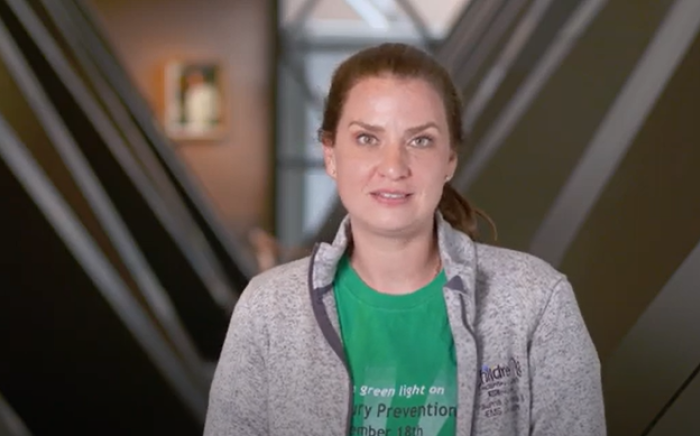What is Kawasaki Disease?
Kawasaki Disease is a rare, but serious illness that affects the blood vessels of young children. It is a type of vasculitis, or inflammation of the blood vessels. Kawasaki Disease can affect blood vessels throughout the body, including the blood vessels of the heart, as well as the nervous, immune, digestive, and urinary systems.
Children of any race or ethnic group can get Kawasaki disease, but it is more common in children whose families are from East Asia or Asian ancestry. Kawasaki disease most commonly affects children ages 0 to 5, but can sometimes affect children up to the age of 13. It occurs in boys more often than in girls.
The cause of Kawasaki Disease is currently unknown, but researchers think it may be the result of an infection.
Without treatment, children affected with Kawasaki Disease are at higher risk of developing problems with the coronary arteries and other heart problems. With timely treatment most children recover with no lasting problems.
For more information about Kawasaki Disease or to speak with a pediatric cardiologist, please call 800.678.5437 or email us.
Symptoms of Kawasaki Disease
These are the most common symptoms associated with Kawasaki Disease:
- Fever of 102.0° F to 104.0° F (38.8°C to 40.0°C) that lasts for at least 5 days
- Red rash
- Swollen lymph nodes, usually in the neck
- Swollen hands and feet
- Red eyes
- Red and dry cracked lips
- Red tongue with white spots (called “strawberry tongue”)
- Irritability
- Fast heart rate
- Diarrhea or vomiting
- Skin peeling
The symptoms of Kawasaki Disease can look like other health conditions. If your child is experiencing any of the symptoms listed above, seek advice from a healthcare professional or call 800.678.5437.
How Is Kawasaki Disease Diagnosed?
Your child's healthcare provider can usually diagnose Kawasaki disease by his or her symptoms and a physical exam.
To diagnose Kawasaki, other causes for the symptoms must be ruled out. A fever for 5 days must be present in addition to having 4 out of 5 of the following:
- Red eyes
- Changes in the lining of the mouth
- Skin changes in the hands and feet
- Rash
- Swollen lymph nodes
Other tests used in diagnosing Kawasaki Disease include:
-
Lab tests. Blood and urine samples are taken to check for signs of inflammation. These are also used to help rule out other health problems.
-
Electrocardiography (ECG or EKG). This test records the electrical activity of the heart through small, sticky patches on the child's chest. The patches are connected to a machine with wires. The machine records the electrical activity. This helps check for problems with heart rhythm and heart structure.
- Echocardiography (echo). This test uses sound waves to create a picture of the heart. This can show problems with heart structure, valves, and heart function. This can also show problems with the coronary arteries.
Kawasaki Disease Treatment
Treatment for Kawasaki Disease will depend on your child’s symptoms, age and general health. It will also depend on how severe the condition is. Treatment typically starts as soon as the problem is suspected. Your child may need to stay in the hospital for a few days or longer.
Your child's healthcare provider may prescribe aspirin or intravenous (IV) gamma globulin (IVIG). Corticosteroids and other medicines may also be prescribed if aspirin and IVIG don't work well.
Once your child is home, he or she may need to take low-dose aspirin for 6 to 8 weeks. Do not give your child aspirin without first talking with the child's healthcare provider.
If your child develops heart problems, their healthcare provider may send you to a pediatric cardiologist, a doctor with special training to treat children’s heart problems.
Once treatment begins, most children with Kawasaki Disease get better within a few weeks. But serious complications may occur. Those involving the heart include:
- Weakening of one of the heart's arteries (coronary artery aneurysm)
- Heart muscle that doesn't work well or heart attack
- Inflammation of the heart muscle (myocarditis), lining of the heart (endocarditis), or covering of the heart (pericarditis)
- Heart valves that don't work well
- Heart failure
If your child has a coronary artery aneurysm, echocardiograms will be needed, sometimes for several years after the illness. Your child may need more treatment, including blood thinners to prevent clots. It is important to keep follow-up visits with your child's healthcare provider, even if your child is feeling well.
There is a risk for early coronary artery disease after having Kawasaki Disease, including early heart attacks. Your child will need to follow a heart-healthy lifestyle for life. This includes eating healthy foods, getting regular exercise and not smoking.
For more information about Kawasaki Disease please call 800.678.5437 or email us.












